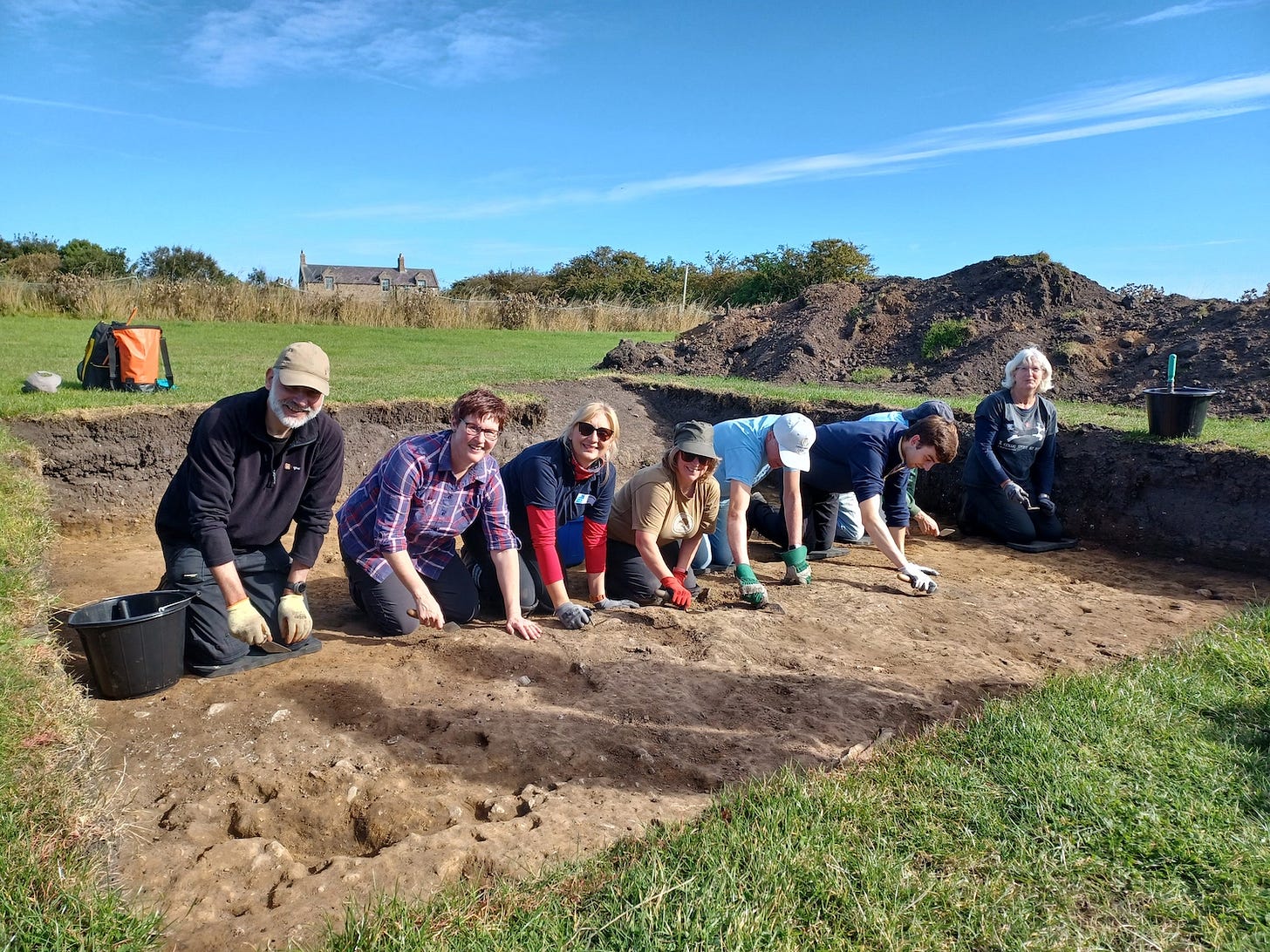Digging into history on Lindisfarne
Diggers are rolling back the centuries in a new phase of excavations on Holy Island. Tony Henderson reports
Archaeologists have returned to Holy Island to continue investigating a cemetery which was in use for hundreds of years.
Part of the burial area, which lies in front of the island’s priory ruins, may be beneath a council car park.
Dig Ventures, which specialises in crowdfunded and crowdsourced archaeological excavation and Durham University are now in the ninth season of work on Lindisfarne.
This year they have been joined by volunteers from Northumberland Coast National Landscape’s conservation team.
The diggers have opened a new trench is in an area where early medieval burials were discovered by archaeologists monitoring construction of a new Coastguard building in 2022.
Samples from those burials were radiocarbon dated to between the 8th-10th centuries, suggesting they are contemporary with the Anglo-Saxon monastery, which has yet to be found.
The site is now occupied by Northumberland County Council’s Green Lane overflow car park.
Past excavations have uncovered scores of burials of men, women and children dating from the 7th-8th to the 11th centuries, showing that it was not confined to the monastic population.
Pieces from a number of headstones have also been found, some of which are on show in the island’s museum.
One of the first finds in the current dig is a part of a headstone which includes an inscription which might be the name of an Anglo-Saxon woman
Northumberland County Council archaeologist Nick Best said “It’s exciting to have the opportunity to revisit this important site and to investigate a larger area as part of DigVentures’ established project."
A pop-up Finds Room has been set up based in the Crossman Village Hall.
The investigations in Green Lane are funded by Northumberland Coast National Landscape and Dig Ventures.
Sarah Winlow, national landscape officer said “We’re delighted to be able to support the dig this year, and especially grateful for the opportunity for so many local people to be involved uncovering more about the story of Lindisfarne.”
Glen Sanderson, Leader of Northumberland County Council, said: "It's a fascinating reminder of the rich history of the county that survives beneath our feet.
"There has been real collaboration between partners to carry out this work and it's also given some of the Holy Island residents the chance to become involved with this new glimpse into Lindisfarne's past."
It is hoped that this season’s dig will add to the list of intriguing discoveries made in the last nine years.
Dig Ventures has drawn up a list of the top discoveries:
Excavation has shown that islanders consumed many different types of animal, including cow, sheep, goat, seals, whale, porpoise, fish, and shellfish… but one of the discoveries was a bear claw which may have arrived on the island as part of a pelt or fur after being hunted on the mainland.
Amid the thousands of animal bones recovered on the dig were the remains of a giant auk – a large, flightless bird that became extinct in 1844. Radiocarbon dating placed the auk bones between 718 – 1090.
In 2019, two rings from the 8th-9th century were uncovered from the cemetery area. One was made from copper and the other from animal bone and they were found on an isolated, disarticulated finger bone rather than a complete burial.
The cemetery also produced the lock plate from a wooden chest burial, which was probably a valuable piece of domestic furniture. Analysis showed that the burial was of a teenager or young adult, who died between AD 800 and 1,000.
A bone comb, which likely dates to before the 8th century, features an inscription in Old English: “-EDE”, which could be the end of someone’s name or the ending of an Old English verb. People would write their names on bone combs, or sometimes the equivalent of ‘this is mine’ and shows that the owner was literate.
A 1,200-year board game piece is only the second to be found in Britain. Made of bright blue glass with a crown of five white bobbles, it’s probably the ‘king’ from a strategy game that pre-dates chess.
Hundreds of white quartz pebbles have been found in the cemetery site. These are found around the island at the low tide mark, suggesting people were going to the shore to collect them to place on graves, much like flowers today.
A series of fish vertebrae were found clustered around the neck of a skeleton. Analysis revealed that the naturally occurring holes in the centre of the bones had been deliberately widened to facilitate threading, or due to years of use, suggesting that they may have been used as prayer beads. Radiocarbon dating placed the skeleton between AD 1033 – 1164.
Nearly 50 coins have been discovered on Lindisfarne, including one next to a burial, which was a coin of Edward the Confessor, dating from AD 1046 – 1048.
It dates from between the 9th and 12th centuries when Lindsfarne’s monks are supposed to have abandoned the island. This coin suggests that the island may not have been as empty as some sources suggest and that pilgrims may still have been visiting.Another coin was a sceat, which was discovered in 2021. Dating to the reign of King Eadberht, its near-mint condition shows the image of a four legged beast. Eadberht became king of Northumbria in AD 737.






